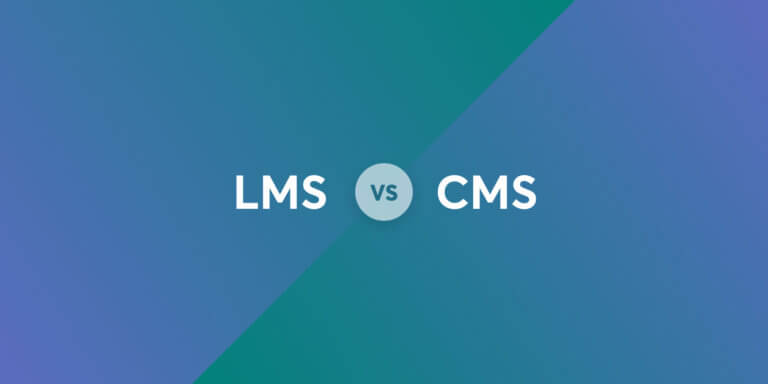If you’re planning to build an online learning platform or manage digital content, you’ve likely come across two popular terms — LMS and CMS.
At first glance, they may seem similar. Both help you create, organize, and manage digital materials. But in reality, they serve very different purposes.
Understanding the difference between a Learning Management System (LMS) and a Content Management System (CMS) can save you time, money, and a lot of confusion — especially when building educational websites or e-learning portals.
This guide breaks down what each system does, their main features, and how to choose the right one for your needs.
What is a CMS?
A Content Management System (CMS) is a software platform used to create and manage digital content — such as blog posts, images, videos, and web pages.
The primary goal of a CMS is to make publishing content easy, even for non-technical users.
Examples of popular CMS platforms:
- WordPress
- Joomla
- Drupal
- Squarespace
Common CMS use cases:
- Company websites
- Blogs and online magazines
- Portfolios and small business sites
- Basic e-commerce stores
Key CMS features:
- WYSIWYG editors (drag-and-drop design)
- Media management (upload images, videos, etc.)
- SEO tools and plugins
- User roles and permissions
In short, a CMS helps you create and manage content, but it doesn’t include features for teaching, grading, or tracking learning progress.
What is an LMS?
A Learning Management System (LMS) is designed specifically for delivering education and training. It allows instructors to create courses, deliver lessons, and track learners’ progress in one centralized platform.
Examples of popular LMS platforms:
- Moodle
- Canvas
- TalentLMS
- Thinkific
- Google Classroom
Common LMS use cases:
- Online schools and universities
- Employee training programs
- Corporate skill development
- Coaching and certification courses
Key LMS features:
- Course creation and structure management
- User enrollment and progress tracking
- Quizzes, assessments, and certificates
- Discussion boards and communication tools
In simple terms, an LMS doesn’t just publish content — it helps learners interact with that content in a structured, trackable way.
The Key Differences Between LMS and CMS
Here’s a side-by-side comparison to make things clearer:
| Feature | CMS (Content Management System) | LMS (Learning Management System) |
| Purpose | Manages digital content like blogs and media | Manages online learning and training |
| Main Users | Content creators, marketers, bloggers | Teachers, trainers, and students |
| Core Function | Publishing and organizing web content | Delivering, tracking, and assessing learning |
| Interaction | One-way (viewer reads or watches) | Two-way (learner interacts and responds) |
| Analytics | Basic site traffic stats | Detailed learner progress and performance data |
| Monetization | Advertising, affiliate marketing | Course sales, subscriptions, certifications |
| Examples | WordPress, Joomla | Moodle, TalentLMS, Thinkific |
If you need to share information, a CMS is ideal.
If you need to teach or train, an LMS is the better choice.
Can You Use Both Together?
Absolutely — in fact, many businesses and educators do.
For example, you might use WordPress (CMS) to run your main website or blog, and then integrate it with an LMS plugin to deliver courses.
Popular WordPress LMS plugins include:
- LearnDash
- Tutor LMS
- LifterLMS
- MasterStudy LMS
This hybrid approach lets you combine the content flexibility of a CMS with the learning power of an LMS, all under one platform.
When to Choose a CMS
Choose a CMS if your main goals are to:
- Publish articles, videos, or tutorials regularly
- Manage a business or brand website
- Focus on SEO, marketing, or audience engagement
- Share information but not track learning outcomes
For example, a blog about digital marketing tips would do perfectly well with WordPress alone.
When to Choose an LMS
Choose an LMS if your main goals are to:
- Offer structured online courses
- Issue certificates or grades
- Track student progress and performance
- Provide quizzes, assignments, and discussion forums
For example, an online academy teaching coding, design, or English would need a full LMS to function effectively.
Hybrid Option: LMS + CMS Integration
If you’re building a serious online education brand, consider integrating both systems.
Benefits of combining them:
- Enhanced SEO from the CMS side
- Better user experience and analytics from the LMS side
- Easier course marketing and content management
For example, you can use WordPress (CMS) to host your blog and marketing pages while connecting it to Tutor LMS or LearnDash for course delivery.
This setup is ideal for coaches, educators, and e-learning startups that want flexibility without sacrificing structure.
Conclusion
Both LMS and CMS platforms are powerful — but they serve different purposes.
- Use a CMS if you want to share information and manage content.
- Use an LMS if your goal is to teach, train, or manage learners.
- Combine both if you want a complete education ecosystem that supports marketing, teaching, and engagement.
Before choosing, think carefully about your goals, your audience, and your long-term plans. A smart choice today can save you months of rebuilding later.

